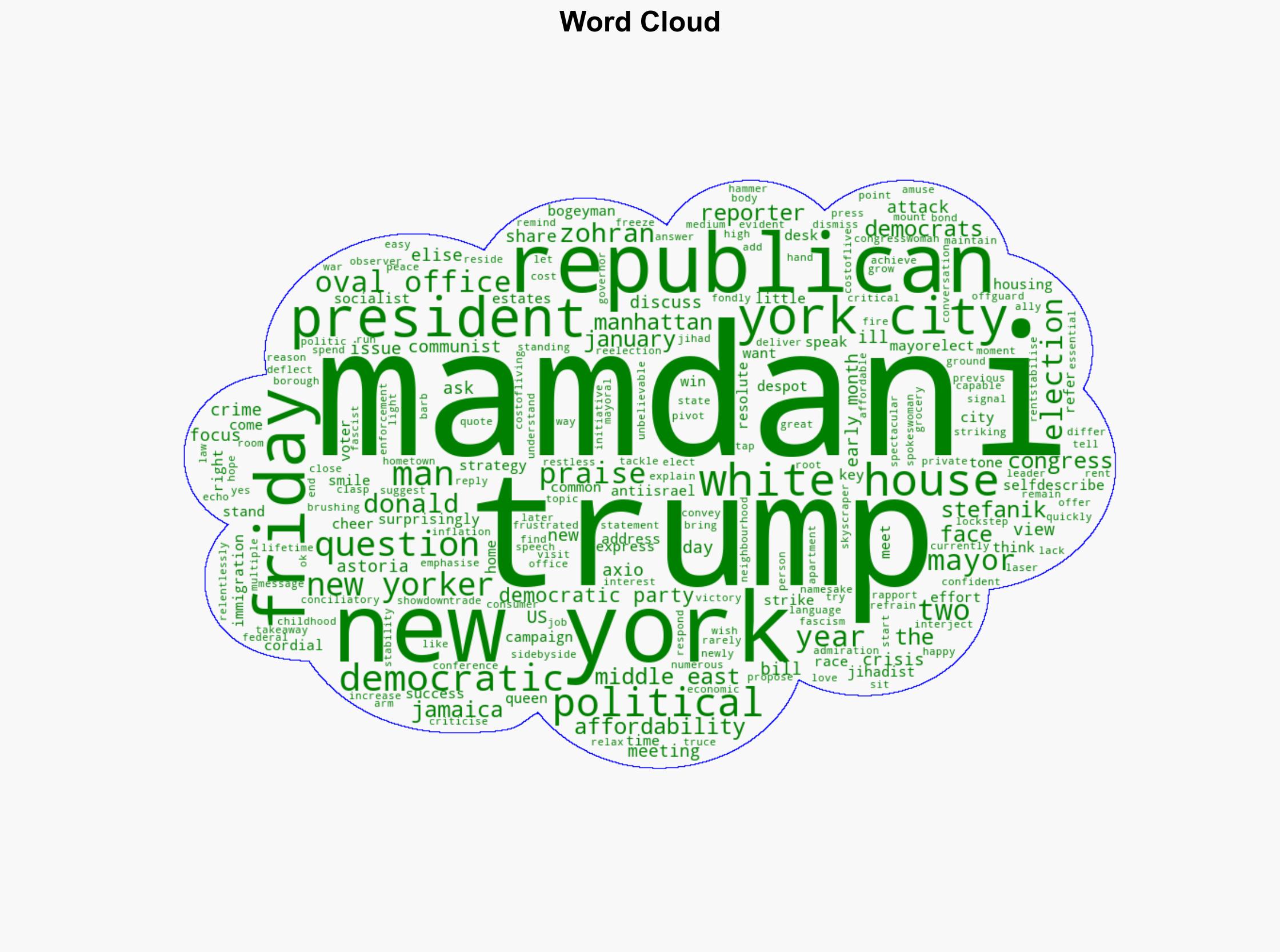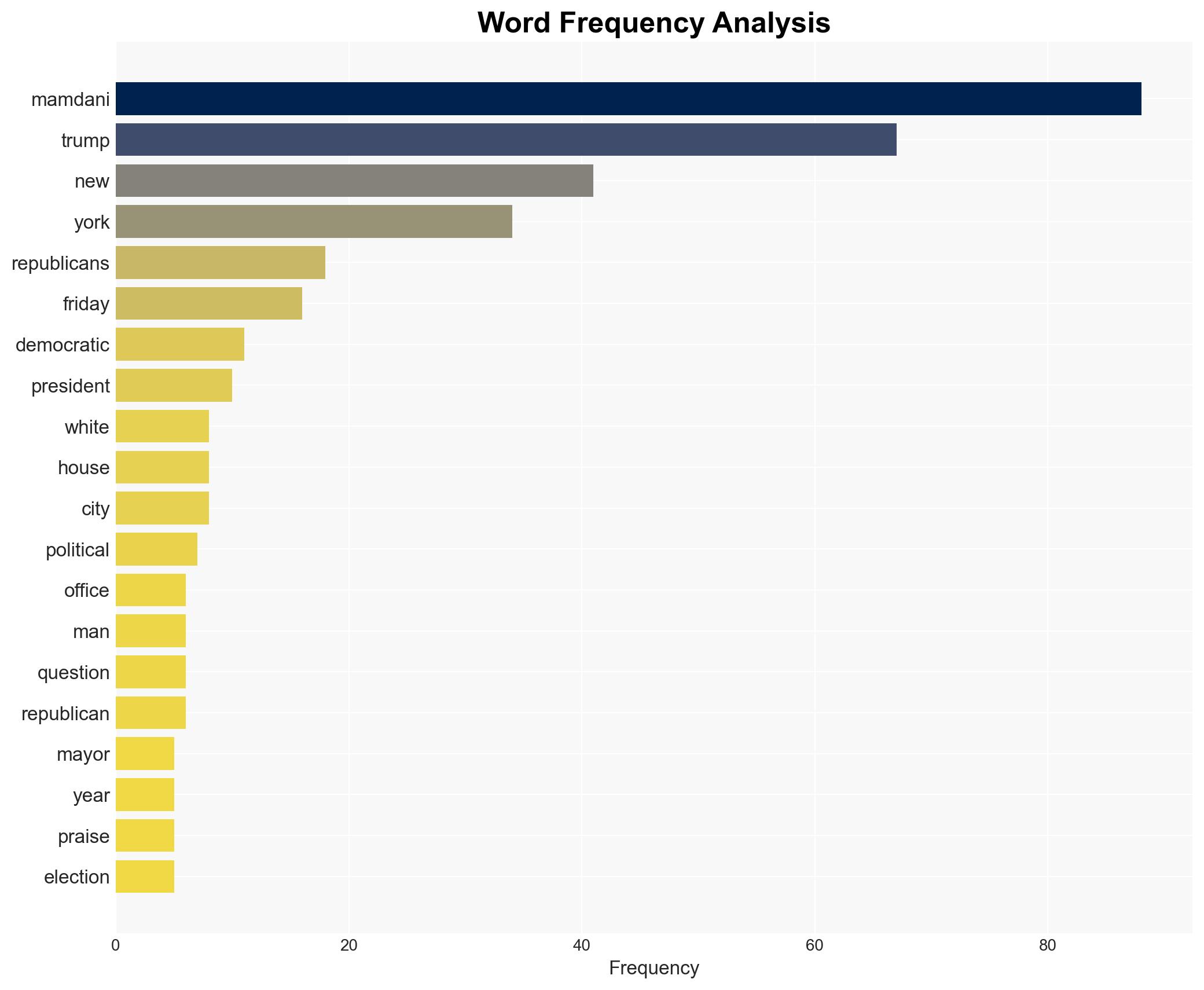‘I’ll be cheering for him’ Takeaways from Trump and Mamdani’s surprisingly cordial meeting
Published on: 2025-11-21
AI-powered OSINT brief from verified open sources. Automated NLP signal extraction with human verification. See our Methodology and Why WorldWideWatchers.
Intelligence Report:
1. BLUF (Bottom Line Up Front)
The meeting between President Donald Trump and New York City’s Mayor-elect Zohran Mamdani, marked by unexpected cordiality, suggests a strategic alignment on shared interests such as addressing the affordability crisis. The most supported hypothesis is that both parties are leveraging this meeting to gain political capital by focusing on common ground issues. Confidence level: Moderate. Recommended action: Monitor subsequent interactions and policy initiatives for alignment or divergence in political agendas.
2. Competing Hypotheses
Hypothesis 1: The cordial meeting is a strategic move by both Trump and Mamdani to address mutual interests in economic issues, particularly affordability, to gain political capital and public favor.
Hypothesis 2: The meeting is a superficial display of bipartisanship with underlying political maneuvering, where both parties aim to neutralize potential criticisms and position themselves favorably for future electoral gains.
Hypothesis 1 is more likely given the emphasis on shared interests and the strategic importance of addressing affordability, a critical issue for both leaders’ constituencies.
3. Key Assumptions and Red Flags
Assumptions include the genuine intent of both parties to collaborate on affordability issues and the absence of ulterior motives beyond political gain. Red flags include the potential for deception in public displays of unity, given past adversarial rhetoric. The sudden shift in tone may indicate strategic posturing rather than substantive policy alignment.
4. Implications and Strategic Risks
The cordial meeting could lead to increased cooperation on economic issues, potentially benefiting both leaders’ political standings. However, if the collaboration is superficial, it may result in public disillusionment and increased polarization. Escalation scenarios include potential backlash from political allies or constituents who perceive the cooperation as a betrayal of core values.
5. Recommendations and Outlook
- Monitor policy developments and public statements for consistency with the meeting’s tone.
- Engage in dialogue with stakeholders to assess genuine commitment to shared goals.
- Best-case scenario: Successful collaboration on affordability issues enhances political capital for both leaders.
- Worst-case scenario: Superficial cooperation leads to public backlash and increased polarization.
- Most-likely scenario: Limited collaboration on specific issues with continued political maneuvering.
6. Key Individuals and Entities
Donald Trump, Zohran Mamdani
7. Thematic Tags
National Security Threats, Political Strategy, Economic Policy
Structured Analytic Techniques Applied
- Cognitive Bias Stress Test: Expose and correct potential biases in assessments through red-teaming and structured challenge.
- Bayesian Scenario Modeling: Use probabilistic forecasting for conflict trajectories or escalation likelihood.
- Network Influence Mapping: Map relationships between state and non-state actors for impact estimation.
Explore more:
National Security Threats Briefs ·
Daily Summary ·
Support us





